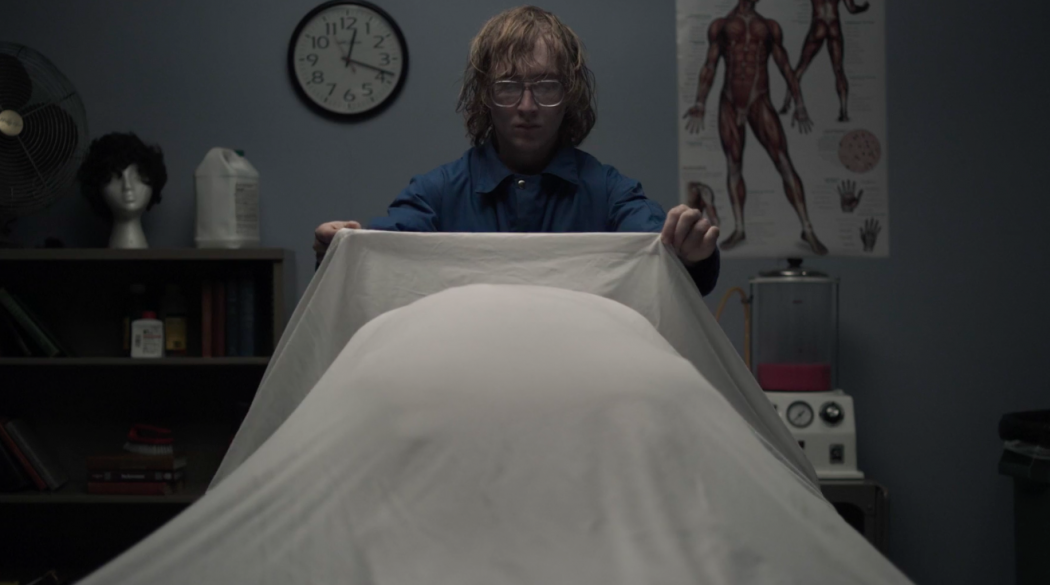“The teleportation audio is derived from NASA recordings of Jupiter’s moons, which sound spacey and meditative.”
Retired UW-Stout professor Bill Johnson has long harbored a fascination with UFOs, stretching back to his days as a field investigator for the Aerial Phenomena Research Organization in the 1970s. His interviews with witnesses, including several in the Elmwood, WI area, have made Johnson a local authority on the subject, even giving talks on his experiences with “Ufology” and why Elmwood’s annual UFO celebration is so important.
One of those speeches turns up in UFO Days, an opaque intersection of Johnson’s factual testimonies and fictional creepiness. UFO Days takes its chilling, creative liberties with “The Visitor,“ a mute alien who walks along dusty farm roads and haunts empty morgues. Details are scarce and any precise connections are best left to director Quinn Else, but one thing is certain: No “Wisconsin’s Own” short has a more arresting opening than this one. We asked Else about UFO Days and “The Truth” for “5 Questions:”
1. You’re switching between the real and the fictional in this. How do you see those two threads, Bill Johnson’s speech you begin with and this urban legend you’re embellishing, relating to one another?
The film took the local Elmwood mythology and imagined if it were real. Rather than making a straight documentary about the event, we wanted to inject some fictional and supernatural elements into it. I’d hope that an extraterrestrial would appreciate how much of a good time the festival is.
2. How did the film’s structure evolve over time?
Bill Johnson volunteered to join a week before we filmed at “UFO Days,” so his presence greatly changed the structure of the film. Originally it was going to be more of a documentary in which The Visitor was a passive observer of the festivities. Bill Johnson’s speech and his acting allowed for a more dramatic arc that culminates with a confrontation at the end.
3. Eric Rhiel as “The Visitor” has a great look. The long hair. The retro glasses. He doesn’t look human so much as something emulating one. What went into designing his character?
The Visitor was inspired by Eric’s real-life style. He recently cut his hair, but he still has his “Dahmer” glasses. We found the maintenance jumpsuit at a Goodwill. In the film, Eric has an uncanny appearance. That is to say, he seems human enough, but robotic and lifeless enough to make the viewer uncomfortable. His intense and expressionless performance helped amplify that discomfort.
4. Sound design is so key to selling us that this is a local story. You don’t use music but your sound choices function as transitions and add an effect to The Visitor’s teleportation.
The film is pretty short and moves quickly, so we didn’t want to bombard it with too much score. The synthesizer sounds and music in it are minimalistic. The teleportation audio is derived from NASA recordings of Jupiter’s moons, which sound spacey and meditative. Our sound recordist, Caitlin Vogelsang, did a great job of capturing the organic sounds of the festival which are the bedrock of the film’s audio.
5. Were the pictures you cycle through in the end credits inspiration?
After completing the film, I found a website that has an archive of nearly all of the bulletins from APRO, the UFO research group that Bill Johnson worked for. These newspaper-like bulletins would be mailed to people interested in UFO’s from the 50’s to the 80’s.
- UFO Days plays as part of the “Creepshow – Wisconsin’s Own Spookiest” program on Sat, Apr 1 at 9:30p in the Union South Marquee.

